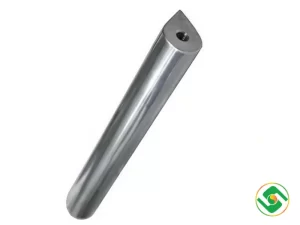One of the most important components of filtration systems is the rod magnetic filter. They help remove unwanted particles from liquids or gases. They are made from a combination of materials including 304 or 316 stainless steel tubes, polar plates, end caps and permanent magnets. Are you looking to purchase rod magnetic filters or magnetic filter bars? If so, it’s imperative that you use caution when selecting a magnetic filter rod manufacturer. It may come as a surprise to you, but there are dishonest manufacturers using shady practices to cut costs and increase profits. These underhanded tactics are not to be taken lightly. In this article, I will reveal the hidden strategies used by some manufacturers and give you the knowledge you need to exercise caution when purchasing magnetic filter rods or bars.
Are you looking to purchase rod magnetic filters or magnetic filter bars? If so, it’s imperative that you use caution when selecting a magnetic filter rod manufacturer. It may come as a surprise to you, but there are dishonest manufacturers using shady practices to cut costs and increase profits. These underhanded tactics are not to be taken lightly. In this article, I will reveal the hidden strategies used by some manufacturers and give you the knowledge you need to exercise caution when purchasing magnetic filter rods or bars.
METHOD #1: REDUCE THE VOLUME OF THE MAGNETS.
By reducing the diameter of the magnets, these companies create an uneven surface on the tube, which leads to easy breakage. And while magnetic flux density tests around the circumference of the plates show that the magnetic flux density of magnetic filter rods/bars/tubes made of smaller magnets won’t decrease by increasing the diameter of the polar plates, the wall of the tube will eventually collapse. This, in turn, will cause the tube to fracture around the plates, rendering the entire tube unusable and, in more severe cases, contaminating the materials as well.
Method #2: Using chipped and fractured magnets.
Some unscrupulous companies will seal these rejects into tubes anyway. And because these defects are indistinguishable in appearance and difficult to detect, they end up causing uneven surface gauss, resulting in a loss of effectiveness.
Method #3: Using “second-grade magnets.”
These are magnets that are made by top-of-the-line manufacturers for top-of-the-line buyers. But they’re thrown away for a variety of reasons. Some unscrupulous companies buy these high quality products at discounted prices. However, these “second grade magnets” are mostly thin pieces between 3-10mm thick. When observed with a magnetic polarizer, these defects will show up as an uneven source of magnetic fields and a lack of consistency from one batch to the next.
METHOD #4: STAINLESS STEEL TUBE THICKNESS REDUCTION
SS304 tubes range from 0.45-0.50mm in thickness. If the tubes get any thinner, the life of said tubes will be drastically reduced. The thinnest SS316 tubes, on the other hand, are between 0.75 and 0.80 mm. SS316 magnetic filter rods/bars/tubes have lower surface gauss than SS304 tubes. Some unscrupulous companies manufacture magnetic tubes with only 0.3mm thick tubes. This allows for higher surface gauss using weaker magnets. The bottom line is that unscrupulous manufacturers try to cut costs through a variety of methods that may affect the quality of the rod magnetic filter.
Buyers should be careful and purchase from reputable manufacturers that use high quality materials and strict quality control. Don’t be fooled by unscrupulous manufacturers – do your due diligence and choose the right supplier for your needs.
It’s important to choose a company that values quality and transparency when looking for a magnetic filter rod manufacturer. At Sinoneo Magnets, we take great pride in our products. We ensure that each one is manufactured with the utmost care and attention to detail. We use only the highest quality materials. We employ strict quality control measures to ensure that our magnetic filter rods are of the highest possible quality.
So be careful when purchasing magnetic filter rods and bars. Choose a trusted manufacturer like Sinoneo Magnets. Your operation deserves the best, and that’s exactly what we provide.










0 Comments